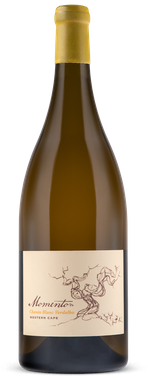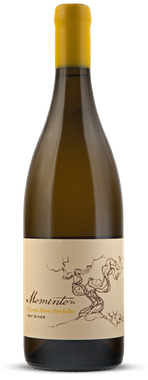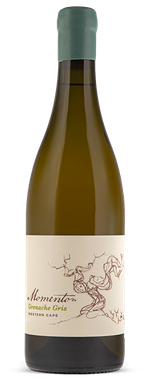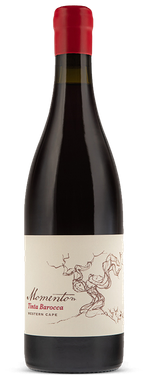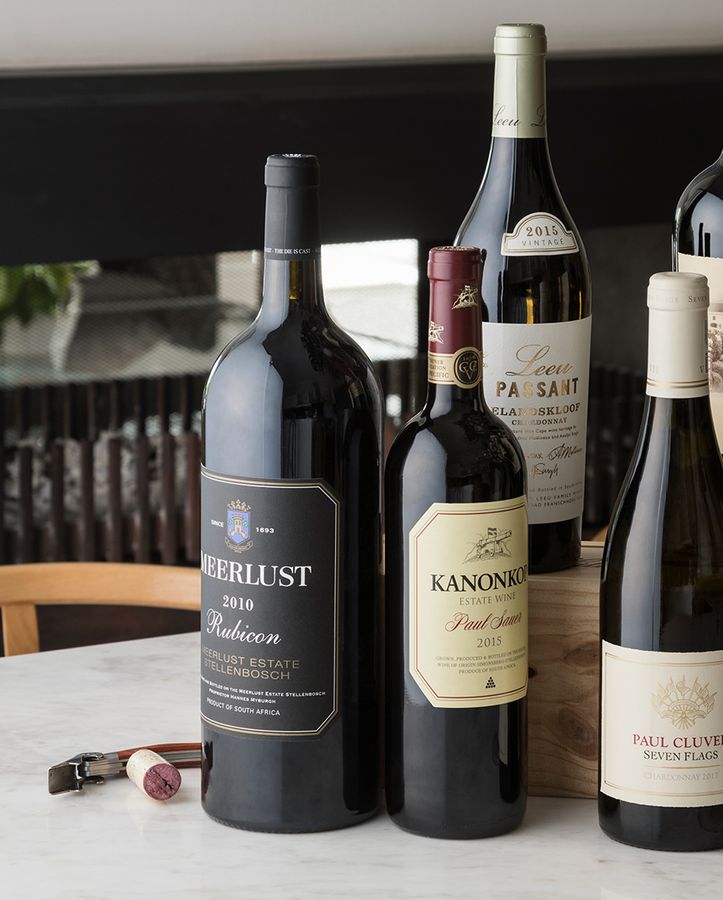But truth be told, many wine drinkers have never even heard of it, let alone tried it. Yet, as one of the most widely planted red grape varieties in the world, Grenache is currently enjoying a new wave of appreciation across South Africa, popping up everywhere from local wine bars, retail stores and restaurant wine lists. Let’s take a moment to count the ways why this somewhat sidelined variety is worth sitting up and swirling about in your round-bottomed glass …
THE GATEWAY GRAPE
When it comes to wine drinking palates, the majority of us are known to stick to the safe. And there’s no judgement in that - after all, why would we want to spend our hard-earned money on something we don’t like, right? However, in recent years, there’s been a wine mental shift hailing across the country. Following the Swartland Revolution, which saw old Mediterranean-style vines and young, experimental winemakers come to the fore, as well as more and more unusual varieties being made available to wine drinkers thanks to platforms just like Port2Port here, the time is nigh for wine drinkers to place their palates into the lesser known avenue of varieties. Grenache is a perfect starting point to start your adventure - it’s something different, yet similar to old favourites like Pinot Noir, and most importantly, it’s perfectly at home within South African soils. I like to see it as the gateway grape to reds.
For the majority of its life, Grenache has sat on the sidelines, being blended into some of the world’s more celebrated reds like GSM (Grenache, Syrah, and Mourvèdre) blends from the Côtes du Rhône region of France. But it is perhaps now, in our drought-ridden winelands that Grenache really has a chance to shine.
Originating from Spain, the Grenache noir grape is generally abbreviated to Grenache for short (not to be confused with sister grape Grenache blanc). Typically, it thrives in hot and dry conditions, enjoying extreme temperatures and poor soils. While the vine originally made its way to the Cape in the 19th century, the light and perfumed variety was only confirmed as such in the early 1900s by a Stellenbosch University professor. Since then, local winemakers have profited from the great collection of old dryland Grenache vines (some over 60 years old) located in relatively untouched regions such as Piekenierskloof and Paardeberg. These old vines give fruit of unparalleled structure, concentrated flavours and aromas worthy of conservation. Thanks to their deep root system, they don’t require any irrigation (hence called dryland vines) and are left to grow on their own accord, saving on maintenance costs and most importantly, water.
If you’re not convinced yet or maybe you’re new to reds, Grenache is also a foolproof place to start. Yet, even if you’re a seasoned red drinker, dare to try something different from your traditional full bodied, BOOM POW wines like Cabernet Sauvignon and Shiraz, that tend to leave a mark not only on your palate but more often than not, your pocket too. Affectionately called the ‘poor man’s Pinot Noir’, Grenache is generally more affordable but equally as light as Pinot Noir, both in colour and in soft tannins (leaving none of that grippy, dry mouth feeling after a sip). As a variety, it is super juicy and a fruit basket full of aromatics, with plenty of red fruit on the nose. But perhaps the most pleasing thing about Grenache is that it is a wine for all seasons. While a classic choice for winter, it is a surprisingly perfect summer red, best served chilled and paired with some Spanish tapas on a balmy day (hello summer 2019!).
A MEMORABLE MEMENTO
So, keen to give Grenache a go?
While the vineyards and wine shelves are full of exciting Grenache blocks, my first port of call is always Marelise Niemann of Momento Wines. Perhaps it’s because her wine was the first South African Grenache that I ever tasted (and loved!), but it’s also one of the few that I’ve kept coming back to. She’s also a one woman advocate for the grape, dedicating her winemaking energy to continually pushing this variety to the frontlines of tastings.
As the previous assistant winemaker at Beaumont, Marelise has since branched out on her own to start Momento. Referring to a memento or ‘souvenir’, Marelise explains that the name came from her travels to Spain, where her passion for wine began. “My most memorable occasions are those where I’ve drank memorable wines celebrating something special. I want people to drink Momento wines and remember the good times while enjoying the wine, whether with friends, family or at sunrise after a good party,” she explains.
Interestingly, Marelise’s love for elegance in wines started in Burgundy. After relishing a delicate bottle (or two) of Pinot Noir, she enjoyed how the wine grabbed her full attention without being too in her face, over-extracted or over-oaked. However, the growing conditions in South Africa are not akin to Burgundy, so she made the decision to not work with Pinot Noir. But the love for an effortless light red was planted.
From there, it was a hop and a skip to Spain, where she fell for the region’s king grape, Garnacha.
CLIMATE CONSCIOUS
“During the harvest of 2010, I worked with the most incredible old, dryland bush-vine Grenache. Here I got to see and learn that treating this grape gently with less winemaking intervention (i.e. less extraction) you can produce the most charming wines from Grenache grown in warm and dry conditions. There were a lot of similarities between the growing conditions in Spain and in South Africa and I decided to pursue the mission to search for great Grenache vineyards in South Africa,” reflects Marelise.
After completing a harvest in Priorat, Marelise returned, bright-eyed and bushy tailed, eager to find Grenache in South Africa. In 2011, she brought her first Momento Grenache grapes from a farm in Eendekuil, Swartland, which was released in 2013. 7 years down the line, Marelise continues to source grapes from the Swartland and Voor-Paardeberg area.
“What charms me most about the Swartland, Paardeberg/Voor-Paardeberg area are the soils. I source the grapes from soils that are of granitic origin, basically decomposed granite/sand. Wines from here produces fruit with delicate, subtle aromas and floral characters with the most beautiful, fine tannins,” she explains.
With a strong philosophy of only working with vineyards and varieties suited to the Cape, Marelise is continually mindful of the changing climate and diminishing water supply. “I’ve been making Grenache noir since 2011, working with vineyards planted in soils from granitic origin (decomposed granite) because of my fondness for the elegant style these soils produce, but I have also recently started working with Grenache from the Bot River region, planted in Bokkeveld shale (shale-based soils with clay), soils that produce more plush wines with a bigger structure and grippier tannins. These vines performed so well in the drought, and just confirmed how well- adapted this varietal is to these conditions,” she says.
PUNCH DRUNK PASSION
What began as a punch drunk passion project has evolved into a burgeoning brand, with Marelise becoming a Grenache point person of sorts for winemakers curious in producing the perfumed variety themselves.
“I’ve recently started making wines for a brand new winery, a project in Bot River by Johan and Sue Heyns, the owners of Anysbos farm. Johan started planting dryland bush vine Grenache noir in their Bokkeveld shale and clay soils in 2012, and we launched the maiden vintage of Anysbos Grenache 2016 a short while ago. It’s very exciting! I’ve also started working with Grenache Gris and Grenache Blanc. My maiden release of Grenache Gris was in 2017, and I brought my first Grenache blanc grapes this past 2019 harvest,” she states.
As Marelise expands her portfolio further into the Grenache gene pool, make no mistake - her heart is intrinsically linked to Grenache noir. “I’m mad about the purity of fruit, the delicate energy and elegance, and of course, the fine tannin structure and balance making it an effortless pleasure to completely overindulge!” she laughs.
As a brand, Momento is also tied to Marelise’s love for storytelling. In fact, the label features her husband’s illustration that shows a variety of people. “If you’ve ever pruned bush vines in winter, you’ll notice that each vine has a personality of its own, with its own energy. To me, the people on the label partly illustrate the spirit of the vines, but it also tells the story of my wine philosophy - that wine is not just about vineyards and terroir, but also about the people and personalities involved in inspiring and creating the product.”
As our conversation comes to a close, I ask Marelise what story she wants Momento wines to tell. “For me, I suppose as with any wine, I want my wines to reflect their origin. Together with gentle winemaking techniques, using only natural yeast, I want to produce wines that are pure and honest and which speak of the vineyard and of our incredible, well-adapted South African terroir.”
ALL IT TAKES IS ONE SIP ...
At the moment, Marelise doesn’t own a winery or vineyards. For the time being, her cellar space is at Gabrielskloof, where she works closely together with fellow winemakers and friends Peter-Allan and John Seccombe. “We’re like family. If it wasn’t for them during the 2017 vintage for example, when I was 8 months pregnant, I would never have been able to get all the grapes picked and processed in time!”
At the moment, South African Grenache is still relatively undervalued on the market. This means you can get some incredible quality wines at accessible prices. According to Marelise, fellow winemakers that are doing equally interesting things with Grenache include Adi Badenhorst, David en Nadia Sadie, Eben Sadie and Jan Boland of Vriesenhof.
As the summer months roll around, treat yourself to a glass of Grenache.
All it takes is one sip, and you’re hooked.
If you’d like to explore Momento wines, simply email marelise@momentowines.co.za to book a tasting.
